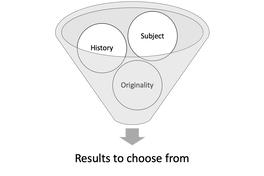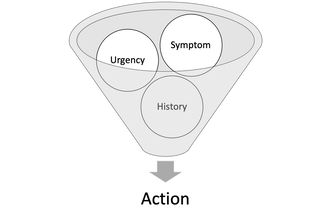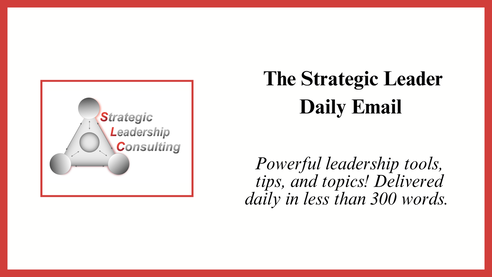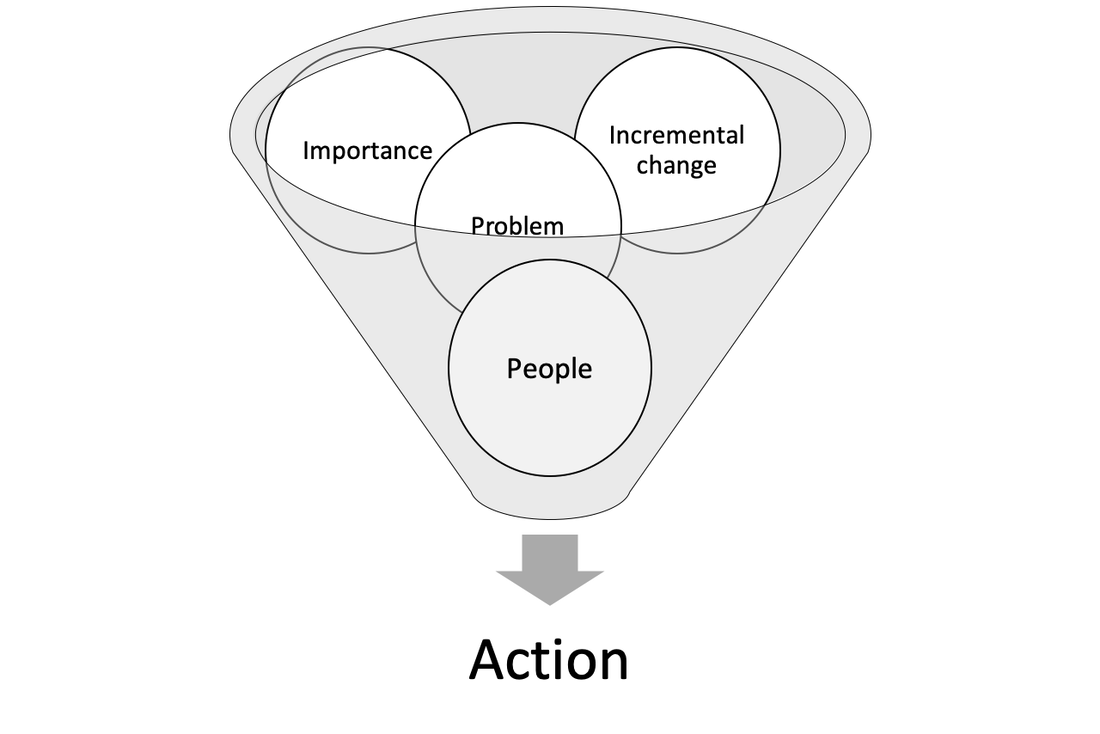|
Colleagues,
This week we’ve been looking at the difference in thinking between urgent and strategic leaders. Each respond to a different set of criteria by running a mental algorithm to produce options when confronted with issues. While urgent leaders prioritize urgency, symptoms, and history, strategic leaders focus on importance, problems, incremental action, and people. When two leaders are confronted with an urgent issue, an urgent leader reacts by looking to alleviate the symptom by drawing on past experience. In contrast, the strategic leader first looks underneath the symptom to diagnose the problem. They then determine if the problem itself is critical to the organization’s health and purpose. They quickly identify key stakeholders and consider how different options will impact those people. This doesn’t mean that urgent leaders are incapable of thinking strategically, it just means that they default to an urgent response. So, how do we move from an urgent algorithm to a strategic one? The first requirement is to be intentional by acting instead of reacting. Consistently asking yourself some questions at the outset and at the conclusion of an event will help you shift your default thinking. When first confronted with a situation:
When deciding on a course of action:
In the coming weeks, we’ll look at more specific strategies and tools for identifying problems and developing solutions. In the meantime, asking these questions will help reprogram your algorithm. It is a crazy time and if you can only take one thing away from this discussion it should be to always stop and ask, “what’s the problem?” This one change will make a huge difference. Do good and stay well, Frederick
0 Comments
Colleagues,
We’ve been looking at our default thinking patterns, or algorithms, this week. Yesterday we discussed the four parts of a strategic leader’s mindset:
It seems obvious to include people as a consideration when dealing with issues, but often times the people are an afterthought. So, why factor people into your algorithm?
When we are working on an urgent mindset, we are focused on satisfying the urgent need. With a strategic mindset, we focus on the underlying problem and how it is impacting people. Imagine there is an issue with too many meetings. An urgent mindset solution would be to create a policy that limits the lengths of meeting, allows them only on certain days, or to require people to take “Effective Zoom Meetings 101” before they can schedule a meeting. A strategic mindset would recognize that people are scheduling these meetings, and that if there are more now than pre-pandemic, the meetings are filling some kind of need. By working with people to uncover the need, a strategic leader can help develop solutions that both meet the need and decrease the number of meetings. It’s not that an urgent mindset couldn’t also do this, but it is not the default thinking pattern. Tomorrow, I’ll give you a handy list of questions to help you reprogram your algorithm. Do good and be well, Frederick Colleagues, Yesterday we looked at the algorithm – the pattern of thinking – of busy leaders. That algorithm prioritizes urgency, symptoms, and history. Strategic leaders think differently, and their algorithms coincide with the four traits of strategic leader:
Also, unlike the busy leader algorithm that runs on autopilot, a strategic leader’s algorithm occurs at a conscious level. This allows strategic leaders to adjust the algorithm based on the unique and changing context of any given situation. The strategic leader avoids the trap of acting based on history and can thus be more mindful of context as a critical factor. Further, by being people focused, solutions are more likely to meet both individual and group needs.
Finally, by acting incrementally, actions are timely and provide either immediate improvement or valuable feedback. The three epiphanies give us permission to break out of old habits. Rewriting our algorithm to be more strategic allows us to generate wiser options to address the most important problems. Over time, we improve our situation and spend less and less time on the treadmill. Tomorrow, we’ll look more closely at why focusing on people is critical for getting off of the treadmill. Do good and be well, Frederick Colleagues, This week we continue our work on developing a strategic mindset. When we type in a topic and hit a button and on our browser our results pop up, but what’s happening in that space between the click and the list of results? Your search engine is running an algorithm in order to get the “best” results. But what goes into the algorithm and why are they the “best” results?  While the algorithms for Google are cloaked in mystery, we do know that they take your topic, factor in your browsing history, and originality and recentness of content (see The Verge, Sept. 12, 2019). This produces a list that is unique to your search. It is not definitive, it is simply a list of possibilities arrived at through a series of calculations – the algorithm.  Interestingly, our minds work the same way. When confronted with an issue, my brain runs an algorithm. Like Google algorithms, the algorithms of our brains prioritize certain things. When we are on the treadmill of the urgent, we prioritize symptoms, urgency, and history. This algorithmic thinking helps us respond quickly to issues in a predictable fashion. However, we are largely unaware that the algorithm is running and because the algorithm is based on symptoms, urgency, and history, we are likely to continue responding to the same issues in the same ways. The sad result is that we continue running on the treadmill of the urgent. In order to get off the treadmill, we need to use our understanding of the three epiphanies to reconfigure our default algorithm. What do you think the algorithm of a strategic leader would prioritize? Think about it, and see how your thoughts compare to mine tomorrow. Do good and be well, Frederick Colleagues,
Yesterday you reflected on your actions from the previous day and your thinking behind your choices. As we wrap up this week, let’s look again at the three epiphanies:
The big idea is that we should be making intentional decisions about how we spend our time. The subtext to this emphasis on intentionality is that we often make decisions unconsciously. You followed me through my busy day on Monday and we dissected some of my thinking on Wednesday. We saw a couple places where I could have been more intentional about my decisions. But what about you? Take 2-5 minutes and reflect on the things you identified yesterday.
The three epiphanies empower you to choose and to be aware of your values in making those choices. When you are intentional about your choices, you can begin to get off the treadmill of the urgent. Next week we will focus on rewriting your mental algorithms to emphasize importance over urgency. Do good and be well, Frederick |
Categories
All
Archives
July 2024
|



 RSS Feed
RSS Feed